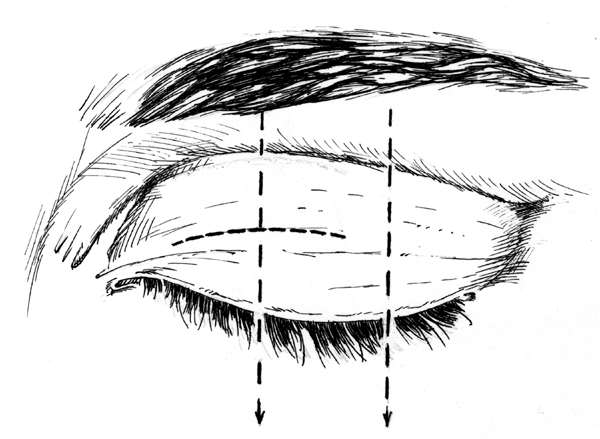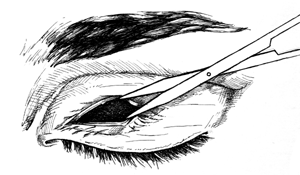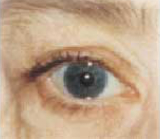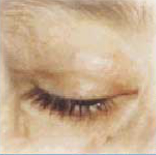Patient FAQs
Are there temporary treatments for Lagophthalmos?
Your physician may recommend eye drops and ophthalmic ointments to keep your eye well-lubricated. A Blinkeze® External Lid Weight may also be prescribed. Blinkeze External Lid Weights are positioned on the upper eyelid and use gravity to gently close the upper eyelid when the patient looks down or when the eyelid muscle is relaxed. MedDev’s Blinkeze External Lid Weights come in a variety of skin tones to match your complexion and are attached to the lid by double-sided hypoallergenic adhesive strips.
What if my paralysis does not improve?
If your paralysis does not improve, your physician may recommend other treatments, including the surgical implantation of gold or platinum eyelid implant weights.
MedDev offers two eyelid implant designs, the Contour® and the ThinProfile®. Your doctor will determine which implant design is best suited for your condition. Implanted eyelid weights function the same way as the Blinkeze External Lid Weights do to close your upper eyelid, but they are less conspicuous and easier for the patient to manage.
Are eyelid implants safe?
MedDev’s Contour and ThinProfile are both made from gold or platinum. Both materials are dense, inert and highly biocompatible – that means they don’t irritate the surrounding tissues. Platinum is approximately 10% denser than gold, which allows for a smaller implant profile. The color of our gold implant closely matches the color of the surrounding fatty tissue, so they are less conspicuous, even in patients with thin skin.
MedDev’s eyelid implants have been used by patients all over the world for almost 50 years. Our products have undergone rigorous testing to assure the highest quality. Independent analysis confirms that the purity of the gold and platinum used in our implants exceeds 99.99%.
What happens if my doctor decides I need an eyelid implant?
Your doctor will determine what size eyelid implant will work best for you. If you’ve been wearing a Blinkeze External Lid Weight, your doctor will already have a good indication of the right implant for you. Otherwise, your physician will evaluate your eyelid function using an eyelid weight sizing kit. Once the right size is determined, the doctor will order the implants for your procedure.
What happens during the procedure?
The surgical implant procedure typically takes less than an hour and can be done on an outpatient basis under local anesthesia. The surgery is frequently combined with other minor procedures to tighten the lower eyelid or with major procedures to improve facial palsy.
During the procedure, your doctor will make a small incision on the surface of your upper eyelid above the lashes (figures 1 and 2). Then a small pocket is created to accommodate the eyelid implant. The implant is held in place inside the pocket with small sutures. Additional sutures are used to close the incision, and an antibiotic ointment will be applied to the closed incision. Your doctor may recommend a protective pad to cover the eye.
What happens after the procedure?
Your doctor will schedule a follow-up appointment a few days after the procedure to remove the sutures and check on your post-operative condition. You should now have improved eyelid closure and blink function.
After the swelling subsides, you will notice a small thickness in your eyelid where the implant is secured. You may experience minor discomfort, swelling and bruising and/or a slight redness near the incision line. In a short time, this discomfort will disappear, and the incision line will fade (figures 3 and 4). Since the muscle that controls eyelid function may strengthen over time, the properly sized weight will close your eyelid slightly lower compared to normally functioning eyelids.
What are the risks?
Complications are rare but can include sensitivity to gold. For patients with a known gold allergy, we recommend platinum eyelid implants. In extremely rare cases, the implant may become dislodged or erode through the skin. Such complications can be readily corrected but may require additional minor surgery.
The implantation is easily reversible if a patient’s condition improves significantly.
Excessive swelling, inflammation or pain after your procedure is rare. In the unlikely event that such problems occur, notify your physician.

Figure 1

Figure 2

Figure 3

Figure 4
